I did a little work on the Mud-Py Analyser this evening, adding in a synchronized "secondary zone view" so that I can compare data from two sensor types at once.
I especially wanted to be able to view soil moisture and temperature at the same time.
The video below is a comparison of soil moisture and temperature for the last 20 days.
There's some surprises in there, at least for me.
I expected something simple like "hotter = dryer."
It ain't so.
It turns out that there's significant changes in soil moisture during the night time. There are times when it is cool at night, and the soil moisture just drops only to climb again.
This is the kind of thing I expected:
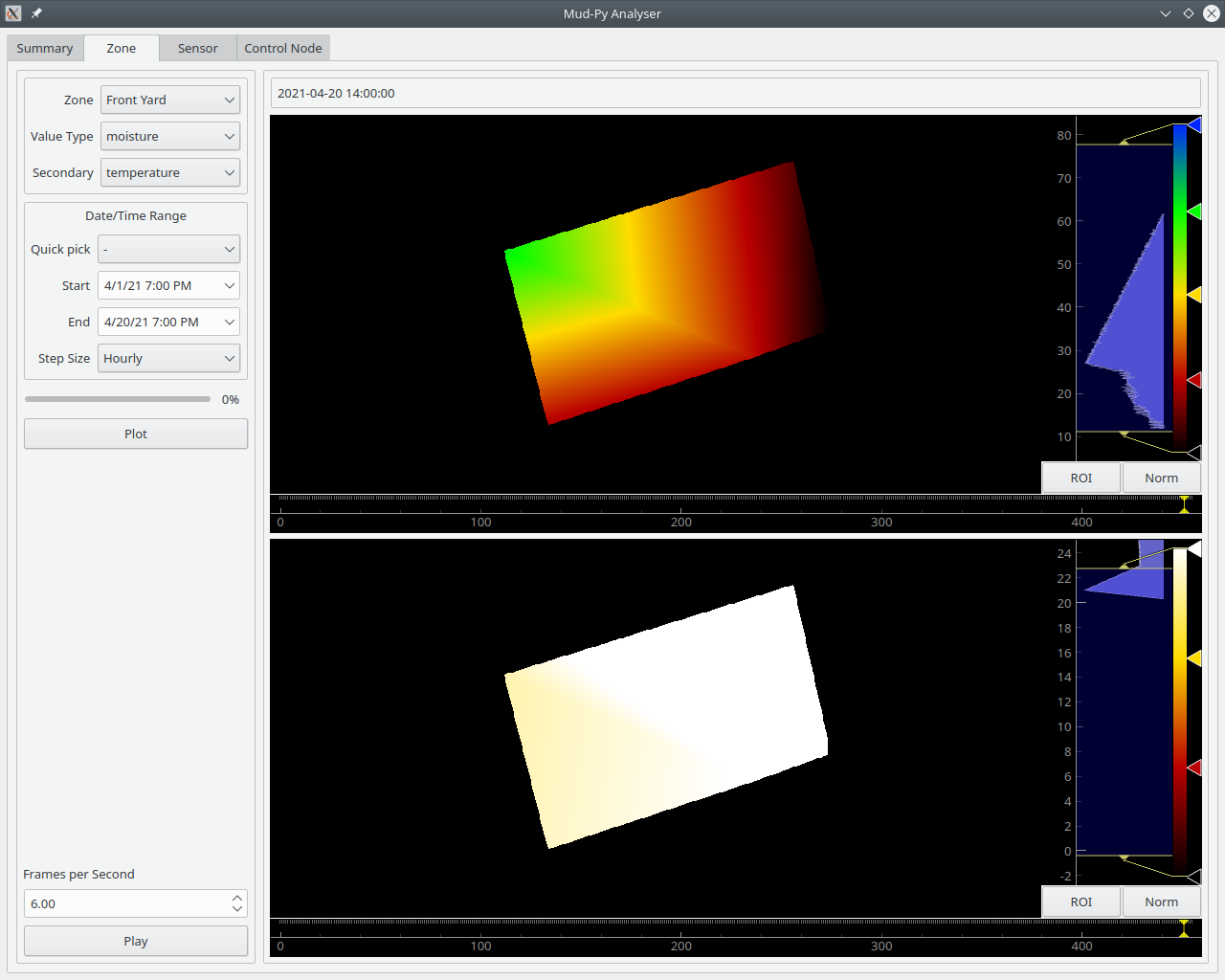
That's a warm afternoon with temperatures above 25 degrees C (heading for 80 degree F.) The soil moisture dropped drastically in the areas I would expect it to. The lower edge is the street, and the right edge is the driveway - the street and the driveway both have deep layers of crushed rock that don't hold moisture at all.
What I didn't expect was this:

Compared to this:
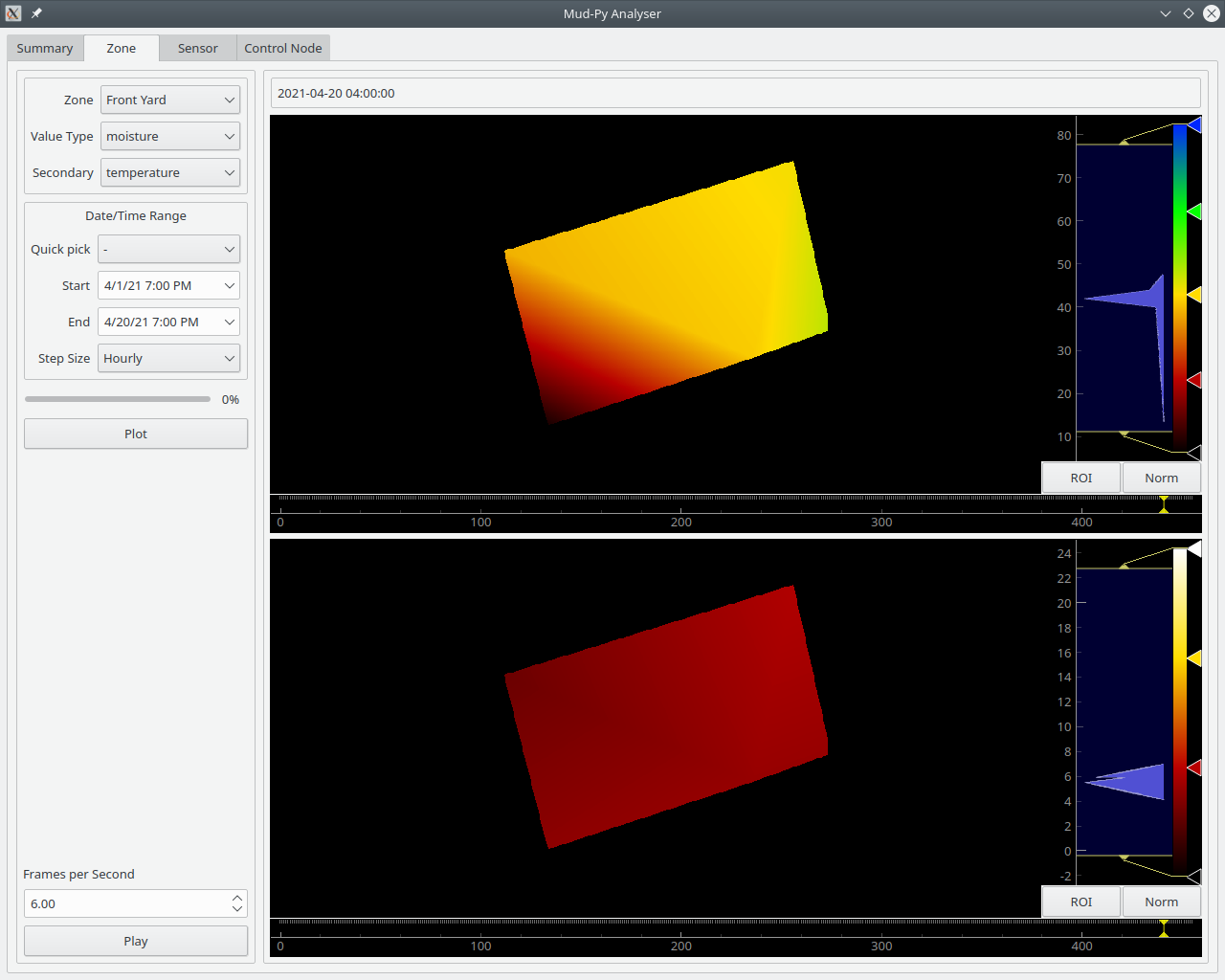 That first image is in the 7 o'clock evening as things are cooling off. It's still around 11 degrees C, and the soil moisture has gone up compared to what it was under the mid-day sun.
That first image is in the 7 o'clock evening as things are cooling off. It's still around 11 degrees C, and the soil moisture has gone up compared to what it was under the mid-day sun.The second image is at 4 o'clock in the morning, with temperatures around 5 degrees C.
The soil moisture has dropped over the entire yard compared to the previous evening, and that lower left corner is practically dried out.
If you scrub through the video, you'll find that the soil moisture has a quite active "night life." Things change a very good bit at times when I'd expect them to settle down.
I looked at some of the individual sensors while I was at it.
Some do only change slowly, like I'd expect.
Like this one:
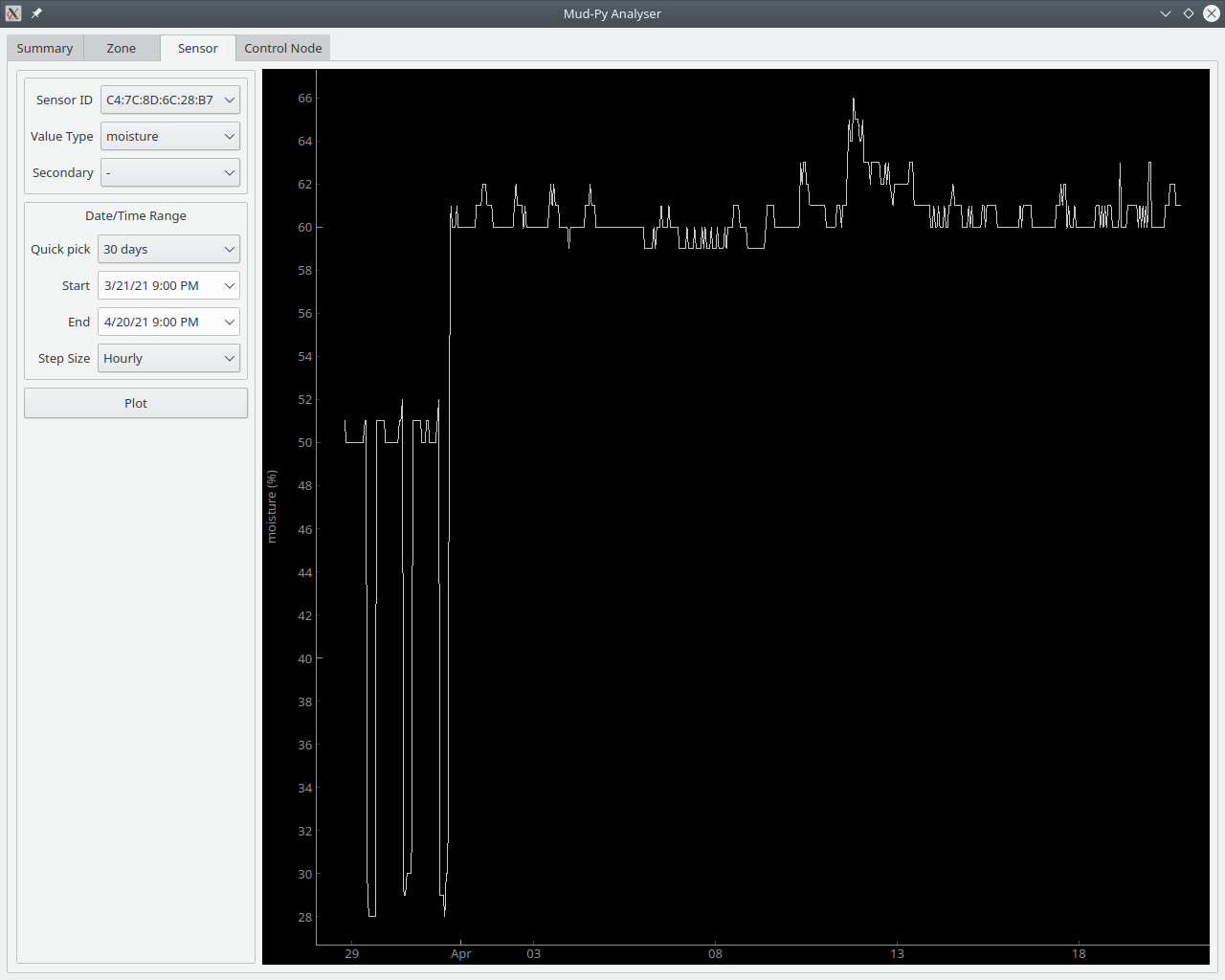 It wanders up and down a few percent, but is has stayed pretty much stable since we got rain around the beginning of April. You can also see where we got more rain around 12 and 13 April.
It wanders up and down a few percent, but is has stayed pretty much stable since we got rain around the beginning of April. You can also see where we got more rain around 12 and 13 April.Then there are ones that just yo-yo up and down all the time:
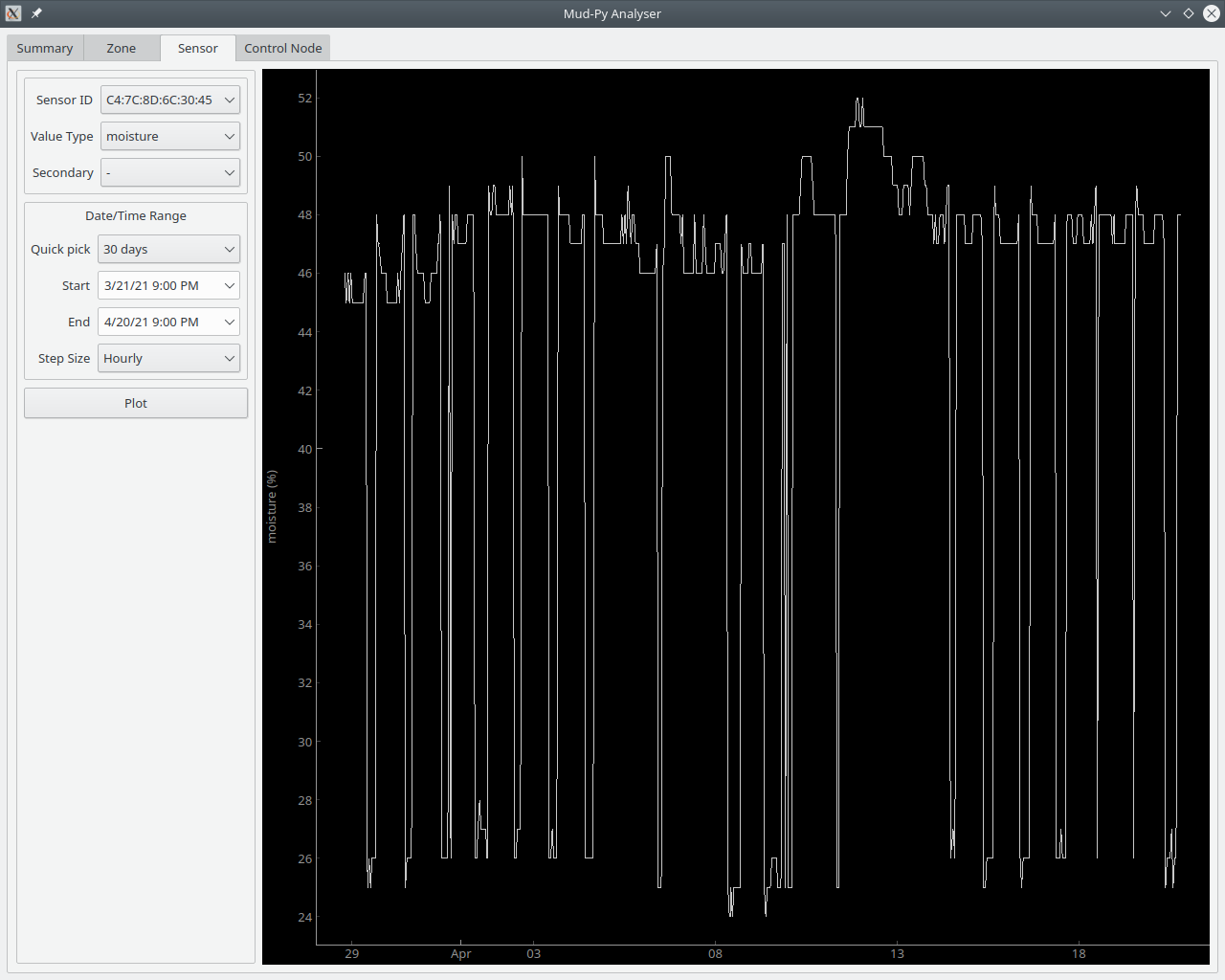 I'm going to have to see if I can tell what the difference is in the soil around the sensors that have large variations and the ones that are more staid. Maybe the bark over the dirt is deeper or something.
I'm going to have to see if I can tell what the difference is in the soil around the sensors that have large variations and the ones that are more staid. Maybe the bark over the dirt is deeper or something.The sensor batteries seem to be recovering some now that things are warming up. Yesterday and today were fairly warm, and the battery capacities have risen again:

Cold increases the internal resistance of the coin cells which makes the sensor think the battery is losing capacity. As they warm up again, the internal resistance of the cells drops and the sensor duly reports a higher capacity.
The lithium cells in the power banks for the control nodes (the ESP32S modules) don't seem to be bothered by the cold:
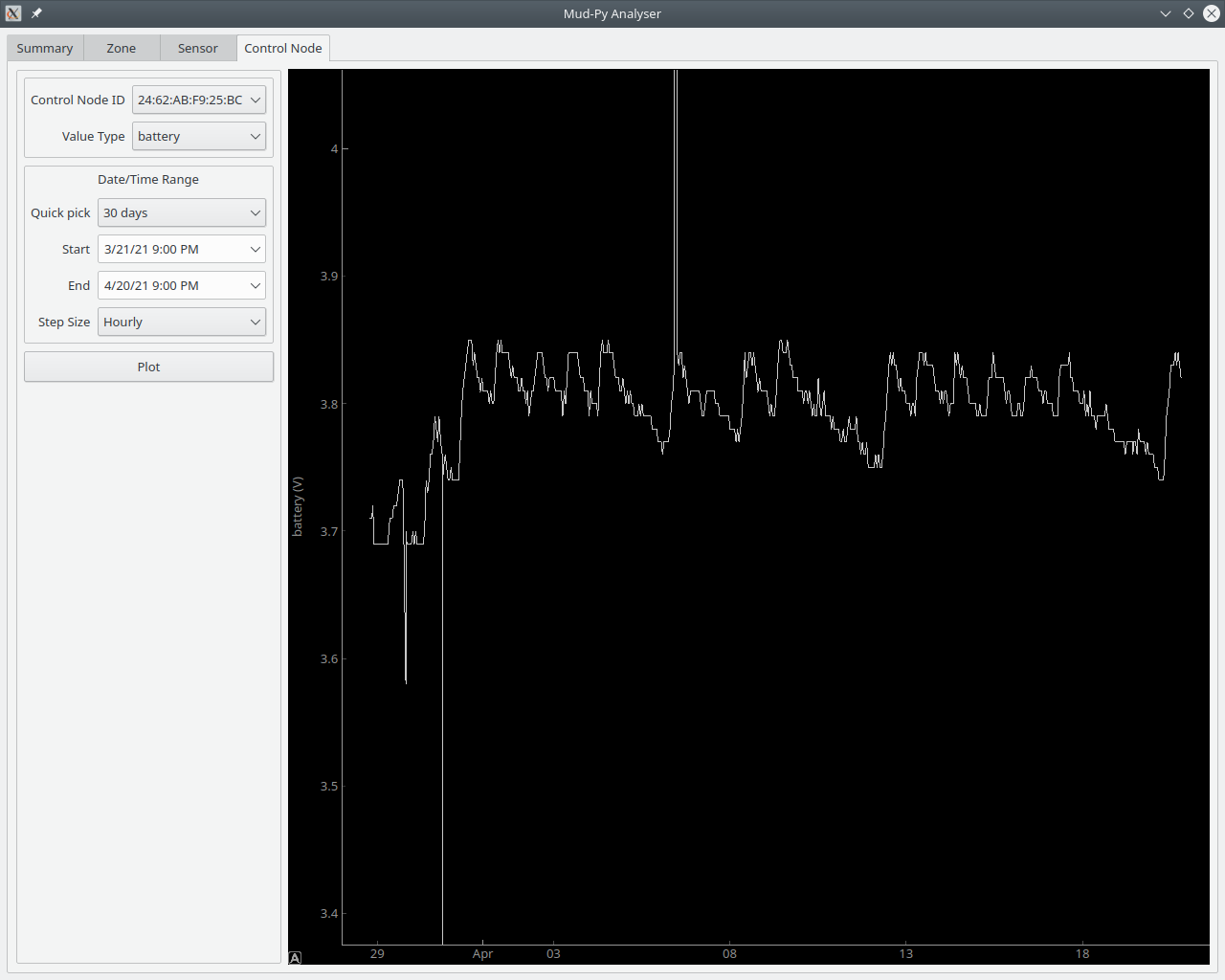 There's a slight daily variation of the voltage as the cells charge during the day and then discharge a bit at night. You can also see the days when it was cloudy here. Those are the longer stretches where the voltage drops for two or three days. I think I can safely say that the power banks will be able to power the control nodes for at least a week of bad weather.
There's a slight daily variation of the voltage as the cells charge during the day and then discharge a bit at night. You can also see the days when it was cloudy here. Those are the longer stretches where the voltage drops for two or three days. I think I can safely say that the power banks will be able to power the control nodes for at least a week of bad weather.I'll see about implementing dual views for the individual sensors, and see what that can tell me.
 Joseph Eoff
Joseph Eoff
Discussions
Become a Hackaday.io Member
Create an account to leave a comment. Already have an account? Log In.